
Haute-Loire is a department in the Auvergne-Rhône-Alpes region of south-central France. Named after the Loire River, it is surrounded by the departments of Loire, Ardèche, Lozère, Cantal and Puy-de-Dôme. In 2016, it had a population of 227,339; its inhabitants are called Altiligériens in French.
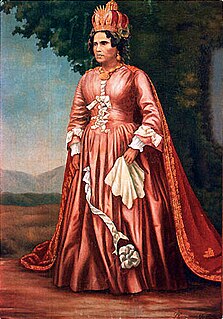
Ranavalona I, also known as Ranavalo-Manjaka I, was sovereign of the Kingdom of Madagascar from 1828 to 1861. After positioning herself as queen following the death of her young husband, Radama I, Ranavalona pursued a policy of isolationism and self-sufficiency, reducing economic and political ties with European powers, repelling a French attack on the coastal town of Foulpointe, and taking vigorous measures to eradicate the small but growing Malagasy Christian movement initiated under Radama I by members of the London Missionary Society. She made heavy use of the traditional practice of fanompoana to complete public works projects and develop a standing army of between 20,000 and 30,000 Merina soldiers, whom she deployed to pacify outlying regions of the island and further expand the realm. The combination of regular warfare, disease, difficult forced labor and harsh trials by ordeal using a poisonous nut from the Tangena shrub resulted in a high mortality rate among both soldiers and civilians during her 33-year reign, with Madagascar's population reducing from 5 million in 1833 to 2.5 million in 1839.
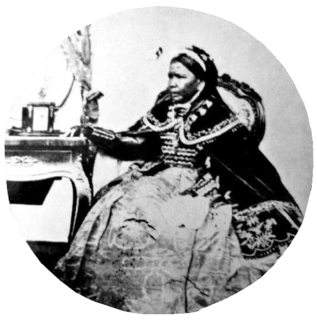
Ranavalona II was Queen of Madagascar from 1868 to 1883, succeeding Queen Rasoherina, her first cousin. She is best remembered for Christianizing the royal court during her reign.
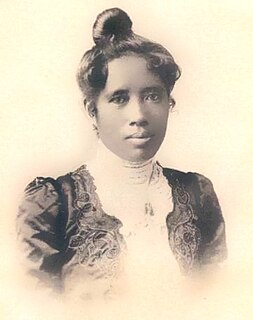
Ranavalona III was the last sovereign of the Kingdom of Madagascar. She ruled from July 30, 1883 to February 28, 1897 in a reign marked by ultimately futile efforts to resist the colonial designs of the government of France. As a young woman, she was selected from among several Andriana qualified to succeed Queen Ranavalona II upon her death. Like both preceding queens, Ranavalona entered a political marriage with a member of the Hova elite named Rainilaiarivony, who largely oversaw the day-to-day governance of the kingdom and managed its foreign affairs in his role as prime minister. Ranavalona tried to stave off colonization by strengthening trade and diplomatic relations with foreign powers throughout her reign, but French attacks on coastal port towns and an assault on the capital city of Antananarivo led to the capture of the royal palace in 1895, ending the sovereignty and political autonomy of the century-old kingdom.
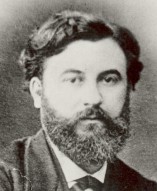
Charles-Émile Reynaud was a French inventor, responsible for the praxinoscope and the first projected animated films. His Pantomimes Lumineuses premiered on 28 October 1892 in Paris. His Théâtre Optique film system, patented in 1888, is also notable as the first known instance of film perforations being used. The performances predated Auguste and Louis Lumière's first paid public screening of the cinematographe on 26 December 1895, often seen as the birth of cinema.

Le Puy-en-Velay is the prefecture of the Haute-Loire department in the Auvergne-Rhône-Alpes region of south-central France.
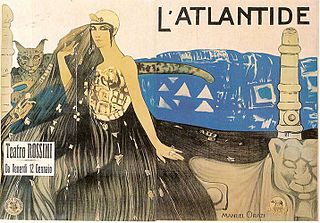
Atlantida is a fantasy novel by French writer Pierre Benoit, published in February 1919. It was translated into English in 1920 as Atlantida. L'Atlantide was Benoit's second novel, following Koenigsmark, and it won the Grand Prize of the French Academy. The English translation of Atlantida was first published in the United States as a serial in Adventure magazine.

Ambohimanga is a hill and traditional fortified royal settlement (rova) in Madagascar, located approximately 24 kilometers (15 mi) northeast of the capital city of Antananarivo. The hill and the rova that stands on top are considered the most significant symbol of the cultural identity of the Merina people and the most important and best-preserved monument of the precolonial Merina Kingdom. The walled historic village includes residences and burial sites of several key monarchs. The site, one of the twelve sacred hills of Imerina, is associated with strong feelings of national identity and has maintained its spiritual and sacred character both in ritual practice and the popular imagination for at least four hundred years. It remains a place of worship to which pilgrims come from Madagascar and elsewhere.

The Roman Catholic Diocese of Le Puy-en-Velay is a diocese of the Latin Rite of the Roman Catholic Church in France. The diocese comprises the whole department of Haute-Loire, in the Region of Auvergne-Rhône-Alpes. Currently the diocese is a suffragan of the Archdiocese of Clermont. The current bishop, as of April 2015, is Bishop Luc Crépy.

Rainilaiarivony was a Malagasy politician who served as the Prime Minister of Madagascar from 1864 to 1895, succeeding his older brother Rainivoninahitriniony, who had held the post for thirteen years. His career mirrored that of his father Rainiharo, a renowned military man who became Prime Minister during the reign of Queen Ranavalona I.
Jean Paul Médaille was a French Jesuit missionary, and founder of an order of Catholic religious sisters. While the Catholic Encyclopedia (1911) and the Encyclopedia of Canada attribute the founding of the Sisters of St. Joseph to Jean Paul Médaille, at least three congregations of sisters identify his older brother Jean Pierre Médaille (1610-1669) as founder of the Order.

The Via Podiensis or the Le Puy Route is one of the four routes through France on the pilgrimage to the tomb of St. James the Great in Santiago de Compostela in Galicia in northwest Spain. It leaves from Le-Puy-en-Velay and crosses the countryside in stages to the basque village of Ostabat. Near there it merges with two of the other routes, the via Turonensis and the via Lemovicensis which merge a little earlier.
Luc Thuillier is a French film and television actor.

The Second Madagascar expedition was a French military intervention which took place in 1894–95, sealing the conquest of the Merina Kingdom on the island of Madagascar by France. It was the last phase of the Franco-Hova War and followed the First Madagascar expedition of 1883–85.
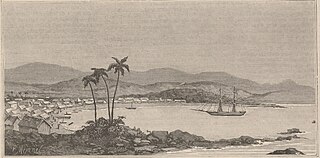
The First Madagascar expedition was the beginning of the Franco-Hova War and consisted of a French military expedition against the Merina Kingdom on the island of Madagascar in 1883. It was followed by the Second Madagascar expedition in 1895.
Marius Grout was a French writer.

Hugues Bousiges is a French civil servant.

Christianity in Madagascar is practiced by 41% of Madagascans, according to the U.S. Department of State in 2011, or by 85% of them according to the Pew Research Center in 2010, often in syncretic form with traditional religious practices. Protestantism was introduced by the first envoys of the London Missionary Society in 1818, who proselytized and taught literacy through a Malagasy language Bible at the public schools they established in the highlands at the request of King Radama I. The number of converts remained low but gradually grew under repression during the reign of his successor, Queen Ranavalona I, and the more permissive religious policies of her son, Radama II, and his widow, Queen Rasoherina.

The europa was a token coinage created in 1928 by Joseph Archer, a politician and industrialist from the Nièvre region in France. The currency was promoted by Philibert Besson, the elected deputy for the Haute-Loire who, along with Archer, was an influential figure in the European federalist movement. The coins were minted in the name of a hypothetical "Federated States of Europe". Unlike contemporary currencies based on the gold standard, the europa was intended to derive its notional value from its value in labour.

















